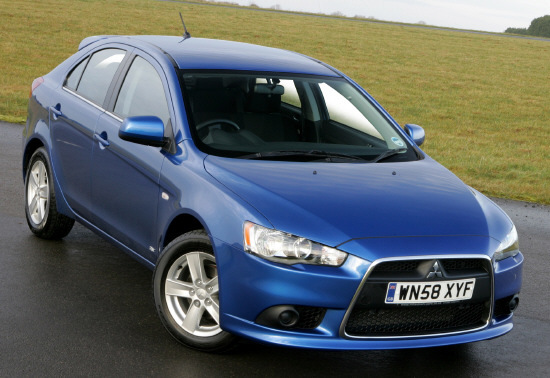With similar aggressive looks to its hell-raising cousin the Evo X, the Mitsubishi Lancer GS3 DI-D offers sporty excitement with one eye on economy.
During my travels with the Mitsubishi Lancer, I was asked at least half a dozen times: “Is that an Evo you’ve got?” Nay, I replied, it is not the 290bhp turbo-charged, four-wheel-drive, fire-breathing Mitsubishi Lancer Evo X. It’s the sensible, reasonably priced, much more economical Mitsubishi Lancer GS3 DI-D.
I can see where they were coming from. Viewed from the front, the Lancer looks similar to its hell-raising cousin, with an aggressive nose, angular headlights, and a general appearance of thinly-veiled menace. Look at it from the back and the illusion is shattered, however — there’s a weedy little single exhaust instead of the Evo’s huge stainless steel twin pipes.
It’s also a hatchback, whereas the Evo X comes as a saloon only. In fact, when the current-generation Lancer first hit these shores back in 2008, all models were saloons.
Realising they had forgotten about our nation’s love of a tailgate, it wasn’t long before they followed up with the model you see above.
Counter-intuitively, it’s actually the saloon that offers the more boot space — 400 litres compared to 344 — but the hatch offers 1349 litres with the rear seats folded (they fold almost flat at the touch of a button), which is massive for this size of car.
With the aggressive nose, sizable rear spoiler and (on my car) tinted rear windows, its sporty looks help it stand out from the market leader — the hugely capable but rather drab-looking Ford Focus.
Starting at £14,849, the Lancer hatchback is available with 1.5 and 1.8-litre petrol engines or the 2.0-litre, 138bhp diesel my car came with. Officially it only does 0-62mph in 10 seconds, but its power comes in low down the rev range and it feels quicker than that.
Although I said at the start of this review that it’s economical (compared to the Evo X) it returns an only-reasonable-for-a-diesel 43.5mpg. A Golf equipped with virtually the same engine returns 58.9mpg, by comparison, though a 2.0 diesel Focus betters the Lancer by only 5mpg.
It emits 173g/km of CO2, meaning vehicle excise duty will be £180 for 2010/11.
Inside, it’s stylish and clearly targeted at a younger market than the Astra and Focus with a modishly dark colour scheme and lots of fake carbon fibre.
The cabin is pretty spacious, though taller rear occupants may be troubled by the sloping roofline which slightly restricts head room.
Dynamically, the Lancer is very good.
I took it on a jaunt from Dundee to Glenshee for a day on the slopes. The suspension soaked up bumps and potholes, while the car remained taut and fun to drive on the twisty mountain roads.
